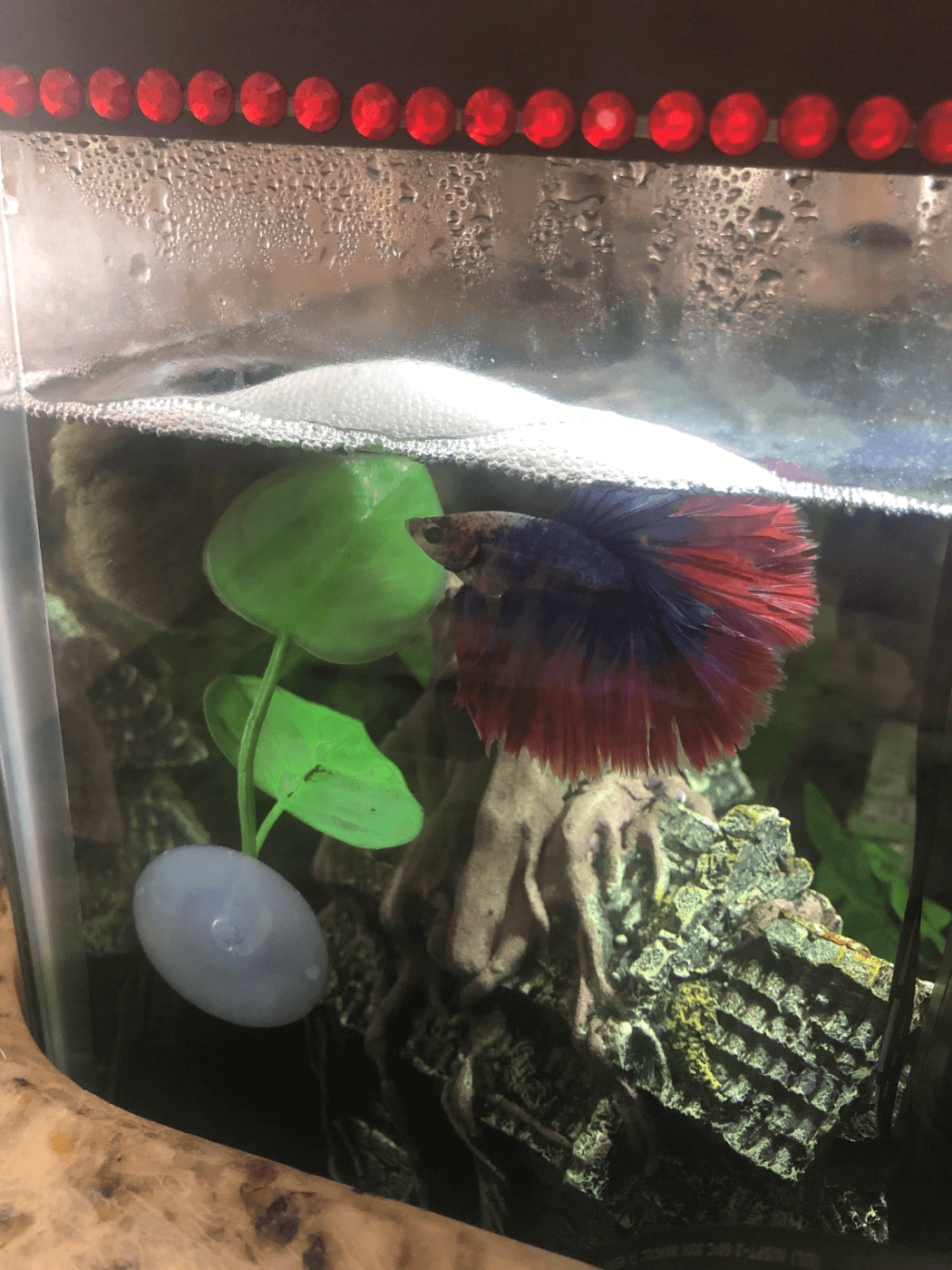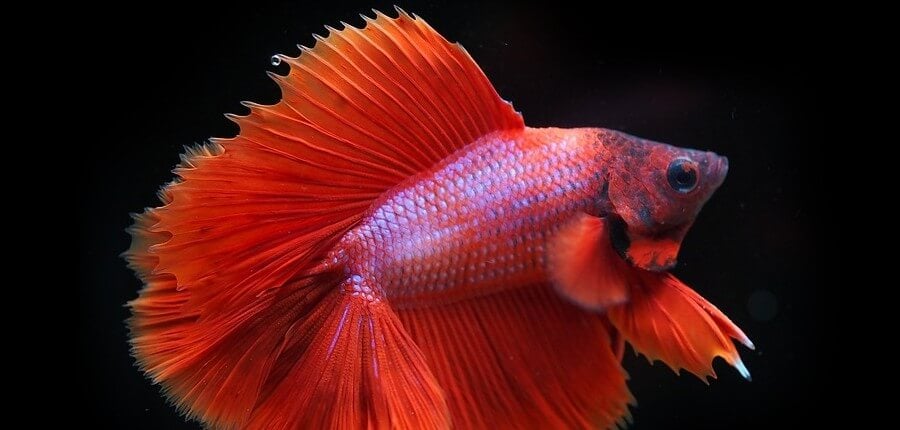It’s exciting when a child in your life begins to show interest in animals. Your first instinct may be to take them to the closest pet store to find their very first companion animal. Upon walking in the door, they’ll likely be drawn to the betta fish. The gorgeous colors and long tails are captivating, but what store employees fail to tell you is just how complex these sentient beings are. They require much more than the plastic cups they’re displayed in and, despite advertising claims, are not easy starter companions.
PETA staffer Anabelle Dunn recently rescued a betta fish of her own. When she took Nico in, he was living in a measly 1-gallon container with no temperature control and a far too powerful filter. The tank setup was a “starter kit” from Petco (which is notorious for causing betta fish and other animals to suffer). Nico came into her care after her partner’s coworker left the office, where she kept him as a desk decoration, and never returned for her fish. His previous caretaker believed that minimal space and lack of enrichment were fine, but since Anabelle took over and provided a beautiful 15-gallon tank for him, Nico has blossomed.

The pet trade has made caring for betta fish look easy. Because stores like Petco keep them in little plastic cups, many customers are under the impression that these fish can live in a small tank—but that’s not true. Like any other companion animal, betta fish need enrichment, such as caves, rocks, and tanks large enough for them to swim happily in. A betta should have at least a 5-gallon tank, which is a far cry from the small fishbowls you’ll see recommended for bettas in these shops. They also need a carefully monitored water temperature, ranging from the high 70s to low 80s.
It’s important to note how these animals get to a pet store in the first place. In case you missed it, PETA Asia launched an undercover investigation that showed the ugly, hidden side of the pet trade. Betta fish are bred into suffering, spending their entire lives in small containers with barely enough water to cover their bodies. Most of the ones you see in the U.S. come from breeding facilities in Southeast Asia, where they’re lucky to survive the breeding tanks. Dead fish, who likely suffocated, were found on the floor of these facilities. If fish aren’t up to beauty standards, perhaps because of a damaged tail, they’re discarded into canals and left to fend for themselves after living dependently in captivity. They’re flown to the U.S. on a plane and denied food during a trip that takes several days. Not surprisingly, many are dead on arrival, and the others end up left in contaminated water, sick or dying, on the shelves of a store.
While you may be thrilled that a kid in your life is excited about getting a “starter pet,” the truth is that betta fish—and any other animal, for that matter—shouldn’t be considered as such. All animals, including betta fish, have specialized needs. You need to finish what you start, and that means pledging to provide for any companion animals’ physical and psychological needs for their entire lives.





